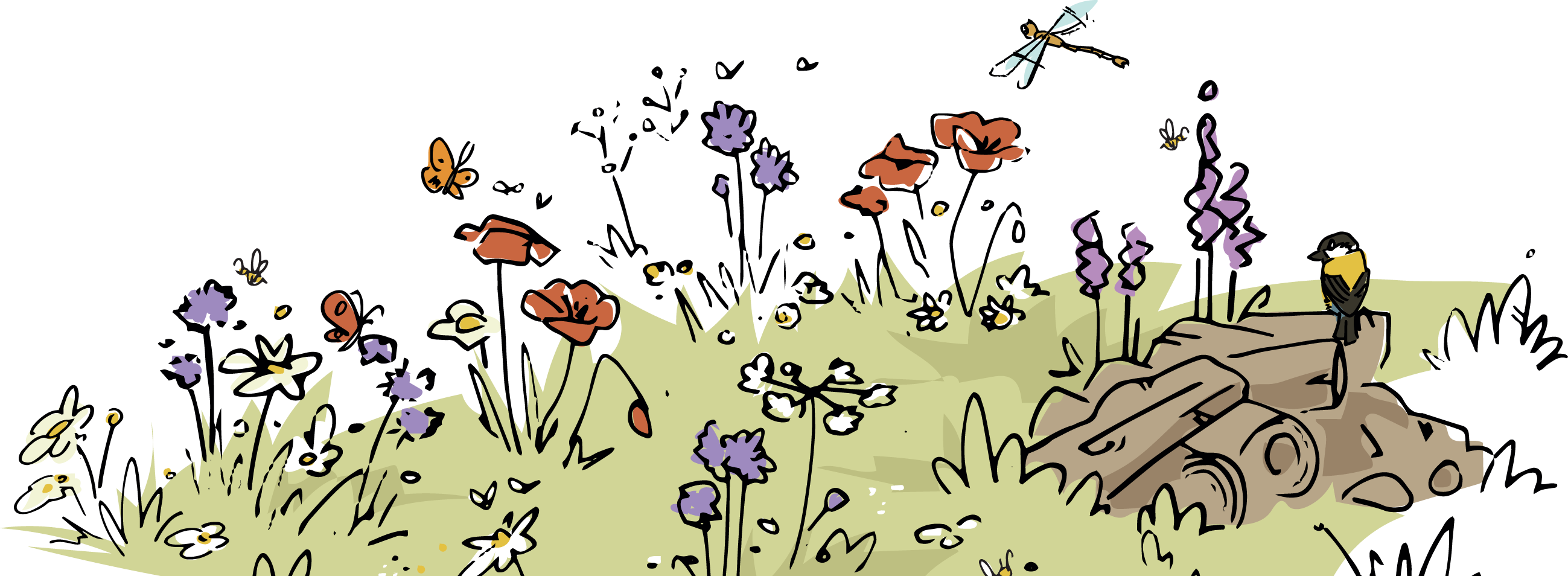Les Apis jardins, le réseau des Éco-Jardins du Parc naturel Burdinale-Mehaigne
Agissez vous aussi pour la conservation de la nature et faites de votre terrain un refuge pour la faune et la flore. Rejoignez le réseau « Les Apis jardins ».

Vous aussi votre jardin peut devenir un refuge pour la nature
Les jardins privés occupent un espace important au sein du territoire du Parc naturel Burdinale-Mehaigne. En adoptant une gestion écologique et en effectuant des aménagements pour accueillir la faune et la flore, votre jardin « naturel » deviendra un véritable refuge dans lequel vous pourrez observer une biodiversité surprenante.
N’importe quel terrain, petit ou grand, déjà aménagé ou non, qui est situé sur le territoire des communes du Parc naturel Burdinale-Mehaigne peut devenir un Apis jardins. Que vous soyez un particulier, une association, une école, une entreprise, tout le monde peut rejoindre ce réseau ! Actuellement, le réseau réunit déjà plus de 150 membres et est composé de jardins très variés à tous points de vue. Pour participer à ce projet qui nous tient à cœur, il suffit d’adhérer à la charte « Les Apis jardins » en respectant les points suivants :
- Réserver au minimum 10% de son terrain pour favoriser la faune sauvage
- Ne pas utiliser de produits phytosanitaires et autres biocides de synthèse
- Privilégier les végétaux indigènes et mellifères
- Lutter contre les espèces exotiques envahissantes et ne pas en introduire dans son jardin ou dans la nature
- Appliquer au minimum 3 mesures volontaires supplémentaires (choisir dans une liste)
Que cela ne vous effraie pas, intégrer le réseau, est à la portée de tous ! Et c’est aussi une occasion d’en apprendre davantage grâce aux ateliers « Les Apis jardins » qui sont proposés, le prêt de livres sur le jardin naturel, les échanges entre membres via un groupe Facebook, des conseils donnés par l’équipe du Parc naturel…
Avec votre aide, nous pouvons tous ensemble constituer un véritable réseau d’Apis jardins. En participant à ce projet, vous contribuez concrètement à la conservation de la nature au sein de notre beau territoire.
Vous aussi vous pouvez faire partie du réseau
Alors, si ce projet vous intéresse et si vous souhaitez faire un geste pour la nature, l’environnement et la biodiversité, nous vous invitons à prendre contact avec le Parc naturel qui se fera un plaisir de vous for mer et de vous informer.
mer et de vous informer.
Contactez-nous pour en savoir plus sur le projet, devenir membre du réseau ou prendre connaissance de la charte
info@pnbm.be – 085/71.28.92
Ce projet est issu d’une belle collaboration entre le PCDN de Braives, les communes de Braives, Burdinne, Héron, Wanze et le Parc naturel Burdinale-Mehaigne.

